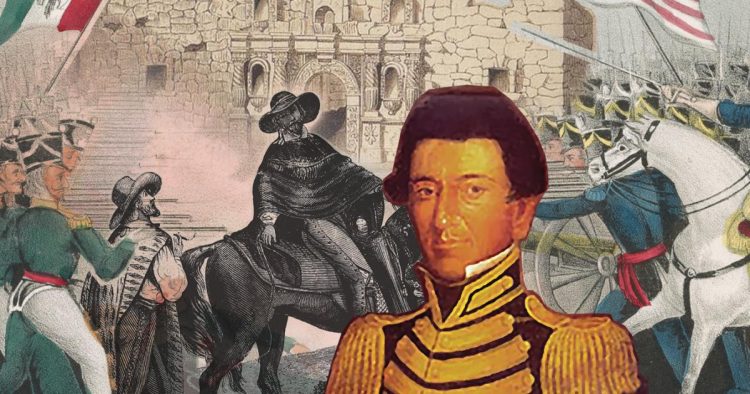Hecho en Tejas: An Anthology of Texas Mexican” – Celebrating the Rich Tapestry of Texan Mexican Culture

Texas, with its vast landscapes, diverse communities, and a history as expansive as its borders, has always been a melting pot of cultures. At the crossroads of Texan and Mexican heritage lies a unique anthology that captures the essence of this cultural fusion – “Hecho en Tejas: An Anthology of Texas Mexican.” This literary masterpiece serves as a testament to the rich tapestry of stories, voices, and experiences that define the Texan Mexican identity.
The term “Hecho en Tejas” translates to “Made in Texas,” and this anthology is a mosaic of narratives that have been crafted and molded by the dynamic interplay of Texan and Mexican influences. Edited by Carmen Tafolla, Norma Elia Cantú, and Christina L. Lamm, the anthology stands as a tribute to the resilience and creativity of a community that has thrived against historical odds.
The stories within “Hecho en Tejas” are not just tales; they are windows into the soul of a region where two cultures have coexisted, collided, and coalesced. Through poetry, prose, and personal essays, the anthology explores themes of identity, migration, family, and the complex relationship between tradition and modernity.
One of the defining features of the anthology is its commitment to showcasing a diverse array of voices. From seasoned writers to emerging talents, the contributors hail from different corners of Texas, offering readers a panoramic view of the Texan Mexican experience. The anthology serves as a literary map, guiding readers through the barrios of San Antonio, the bustling streets of Houston, the serene landscapes of the Rio Grande Valley, and beyond.
“Hecho en Tejas” delves into the historical roots of the Texan Mexican identity, exploring how it has been shaped by centuries of cultural exchange. The narrative threads lead us through the missions of San Antonio, the struggles of the Mexican American civil rights movement, and the vibrant celebrations of traditions like Dia de los Muertos. Each story contributes to a broader understanding of the complex forces that have shaped the Texan Mexican community.
One of the notable aspects of the anthology is its ability to capture the nuances of everyday life. The contributors skillfully weave together the ordinary and the extraordinary, presenting a mosaic of experiences that resonate with readers on a deeply personal level. Whether it’s the aroma of homemade tamales wafting through the kitchen or the laughter echoing in a backyard barbecue, “Hecho en Tejas” brings the sensory richness of Texan Mexican life to the forefront.
Language plays a pivotal role in expressing the Texan Mexican identity, and the anthology reflects this linguistic diversity. Spanglish, a hybrid of Spanish and English, is a prominent feature in many of the works. This linguistic fusion is not just a linguistic quirk but a reflection of the bicultural reality faced by many in the Texan Mexican community. Through the varied cadences of Spanglish, the anthology captures the rhythm of everyday conversations, making it accessible and relatable to a broad audience.
“Hecho en Tejas” does not shy away from addressing the challenges faced by the Texan Mexican community. From discrimination and economic hardships to the struggle for educational opportunities, the anthology provides a platform for these stories to be heard. Yet, amid the challenges, there is an undercurrent of resilience and pride that runs through the narratives, showcasing the strength of a community that refuses to be defined by adversity.
The visual component of the anthology is equally compelling. Artwork and photographs interspersed throughout the collection add another layer of depth to the storytelling. From vibrant murals that adorn neighborhood walls to family photographs capturing generations of traditions, these visual elements serve as a visual companion to the written narratives, creating a more immersive reading experience.
“Hecho en Tejas” also explores the evolving nature of cultural identity. As the Texan Mexican community continues to grow and adapt, so too does its identity. The anthology reflects the dynamism of this cultural evolution, highlighting the ways in which traditions are preserved and reinvented by each generation.
In addition to its cultural significance, “Hecho en Tejas” has garnered critical acclaim for its literary merit. The editors’ careful curation has resulted in a collection that not only serves as a cultural document but also stands as a testament to the literary prowess of Texan Mexican writers. The prose and poetry within the anthology showcase a depth of emotion, a keen sense of observation, and a mastery of language that transcends cultural boundaries.
“Hecho en Tejas: An Anthology of Texas Mexican” is more than a collection of stories; it is a bridge that connects the past, present, and future of the Texan Mexican experience. It invites readers to explore the intricate layers of identity, the enduring spirit of community, and the vibrant mosaic that is “Hecho en Tejas.” Through its pages, readers embark on a literary journey that transcends borders, inviting them to discover the beauty and complexity of a culture that is truly made in Texas.
What is “Hecho en Tejas: An Anthology of Texas Mexican”?
“Hecho en Tejas: An Anthology of Texas Mexican” is a literary collection that brings together a diverse array of stories, poems, and essays reflecting the Texan Mexican experience. Edited by Carmen Tafolla, Norma Elia Cantú, and Christina L. Lamm, the anthology serves as a celebration of the cultural richness and complexity of the Texan Mexican identity.
Q2: Who are the editors of the anthology?
The anthology is edited by Carmen Tafolla, Norma Elia Cantú, and Christina L. Lamm. These editors have played a crucial role in curating a collection that captures the essence of the Texan Mexican experience through various literary forms.
Q3: What themes are explored in “Hecho en Tejas”?
The anthology explores a wide range of themes, including identity, migration, family, tradition, and the evolving nature of cultural identity. It delves into the historical roots of the Texan Mexican identity, addresses contemporary challenges faced by the community, and celebrates the resilience and creativity of Texan Mexicans.
Q4: How does the anthology represent linguistic diversity?
“Hecho en Tejas” reflects linguistic diversity through the use of Spanglish, a blend of Spanish and English. This linguistic fusion mirrors the bicultural reality of the Texan Mexican community and enhances the authenticity of the narratives by capturing the everyday language spoken in this cultural context.
Q5: What is the significance of visual elements in the anthology?
The anthology incorporates visual elements such as artwork and photographs to complement the written narratives. These visual components provide a more immersive reading experience, offering readers a visual representation of the cultural richness, traditions, and everyday life of the Texan Mexican community.
Q6: How does the anthology address the challenges faced by the Texan Mexican community?
“Hecho en Tejas” does not shy away from addressing challenges such as discrimination, economic hardships, and the struggle for educational opportunities faced by the Texan Mexican community. The anthology provides a platform for these stories to be heard, showcasing the resilience and pride of a community that confronts and overcomes adversity.
Q7: What is the literary merit of “Hecho en Tejas”?
The anthology has received critical acclaim for its literary merit. The prose and poetry within the collection showcase a depth of emotion, keen observation, and a mastery of language that transcends cultural boundaries. It is not only a cultural document but also a testament to the literary prowess of Texan Mexican writers.
Q8: How does the anthology represent the evolving nature of cultural identity?
“Hecho en Tejas” explores the evolving nature of cultural identity within the Texan Mexican community. As the community grows and adapts, so does its identity. The anthology reflects this dynamism, highlighting the ways in which traditions are preserved and reinvented by each generation, contributing to the ongoing narrative of the Texan Mexican experience.
Q9: Can “Hecho en Tejas” be considered a cultural bridge?
Yes, “Hecho en Tejas” serves as a cultural bridge that connects the past, present, and future of the Texan Mexican experience. Through its pages, readers are invited to explore the intricate layers of identity, the enduring spirit of community, and the vibrant mosaic that is “Hecho en Tejas.”
Q10: What makes “Hecho en Tejas” unique among literary anthologies?
“Hecho en Tejas” stands out for its unique focus on the Texan Mexican experience. Its diverse contributors, linguistic authenticity, exploration of cultural nuances, and the combination of written and visual elements make it a distinctive literary anthology that captures the heart and soul of a community with a rich and complex history.






